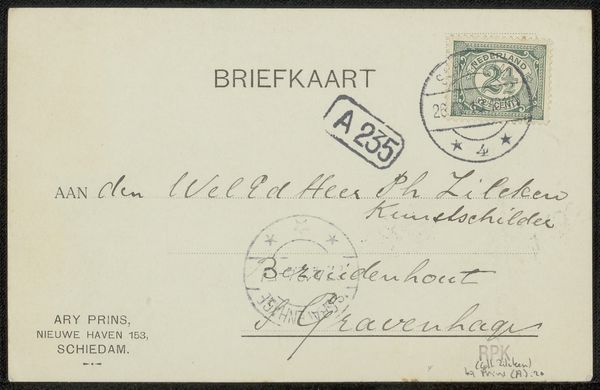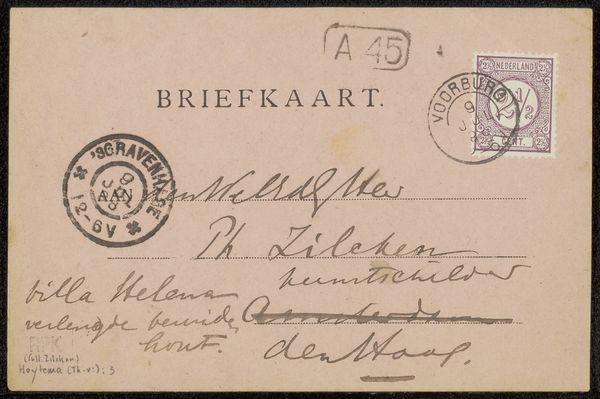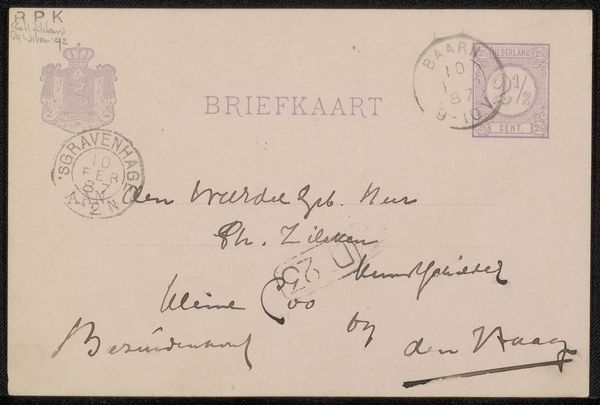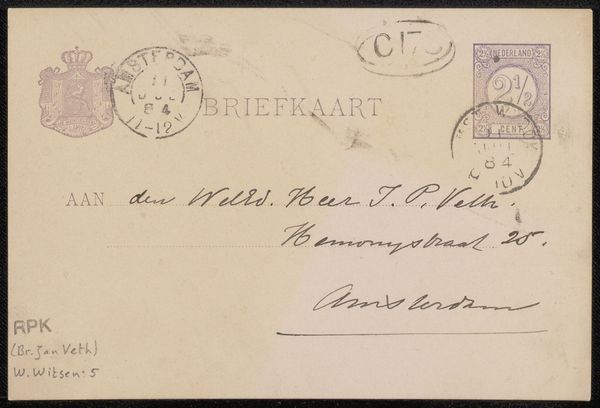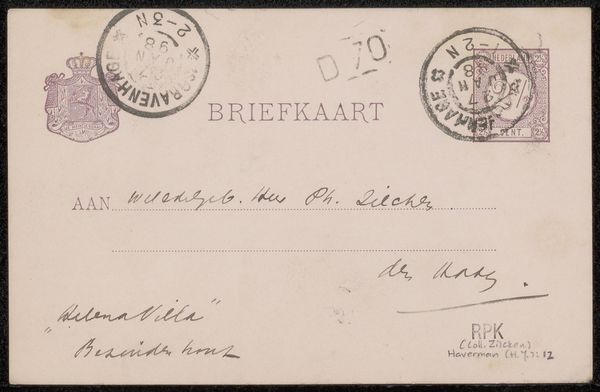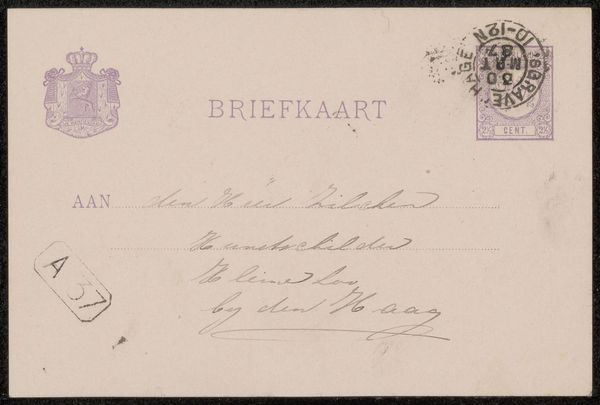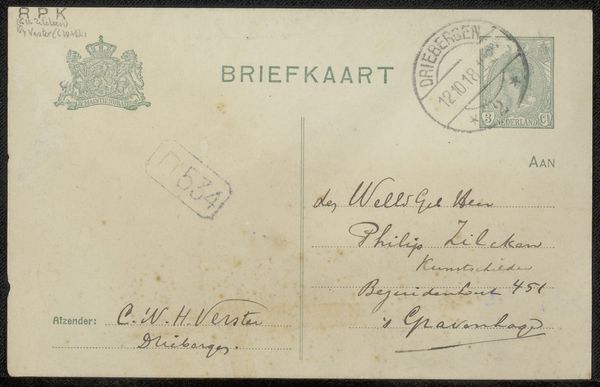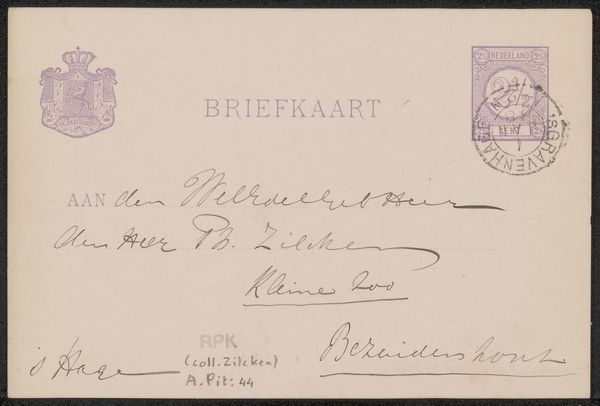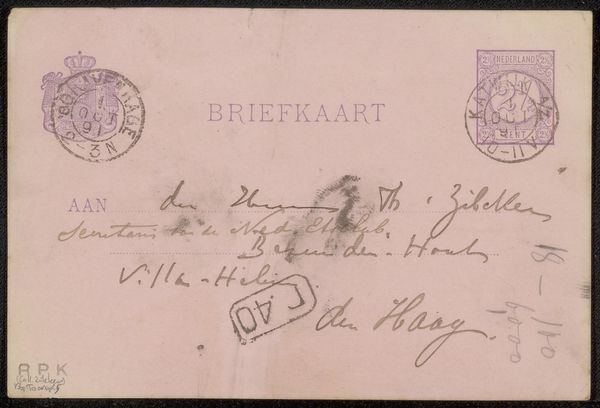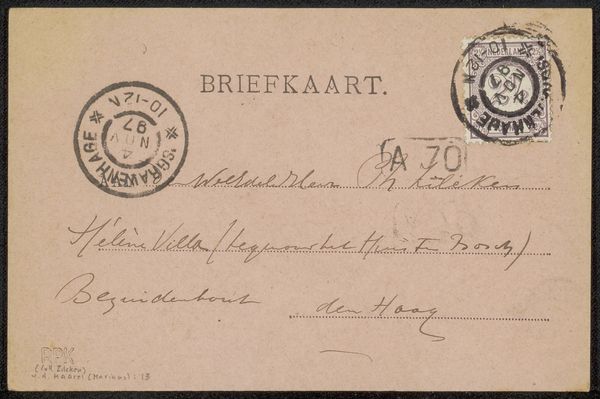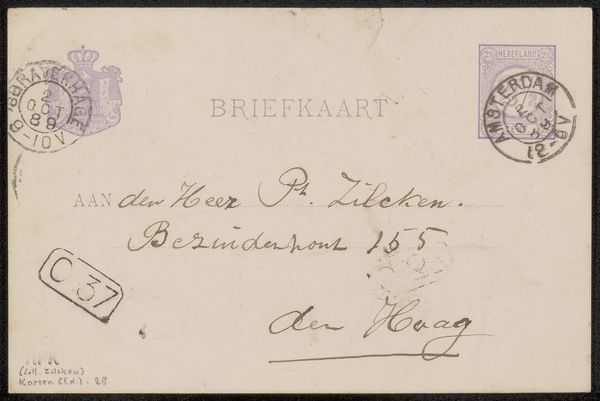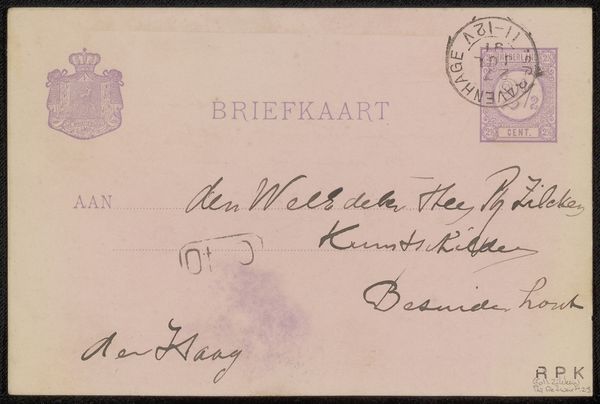
drawing, paper, ink
#
drawing
#
comic strip sketch
#
pen sketch
#
hand drawn type
#
paper
#
personal sketchbook
#
ink
#
ink drawing experimentation
#
pen-ink sketch
#
pen work
#
sketchbook drawing
#
storyboard and sketchbook work
#
post-impressionism
#
sketchbook art
#
calligraphy
Copyright: Rijks Museum: Open Domain
Curator: This delicate postcard, simply titled "Briefkaart aan Philip Zilcken," dates back to before 1897 and is currently held in the Rijksmuseum's collection. It is rendered in ink on paper. What strikes you most upon seeing it? Editor: It's a glimpse into a bygone era. The handwritten address, the stamp... a tangible connection to a different pace of life, a materiality of communication we've almost lost entirely. Curator: Absolutely. And considering the intended recipient, Philip Zilcken, a prominent art critic and artist himself, we might ponder the exchange that this postcard signifies within the artistic networks of the time. Did Toorop value Zilcken's critique? Did he seek validation? Editor: Well, let's consider the card itself as a form of material exchange. The ink, the paper, the postal system--all of it represents resources mobilized to communicate something specific. The economy of a postcard compared to a larger, formal letter is significant; a shorthand of relationship perhaps? Curator: Precisely. The choice of medium speaks volumes, doesn’t it? It alludes to a certain intimacy, an informal dialogue, positioning both sender and receiver within a shared cultural sphere. This 'Briefkaart' highlights not only their interaction but also reveals how art was woven into daily life through such exchanges. The implications about class and status also come into play here. Editor: I’m interested in the craft aspect as well, especially if you look at this closely. There's an artistry to the penmanship. This wasn’t simply scrawled; Toorop took care in forming the letters. The card is more than utilitarian communication, it's also an object demonstrating skill and attention. A humble yet carefully crafted form. Curator: A beautifully put point. It reminds us to analyze the artwork not in isolation but as part of a matrix of power dynamics, societal expectations, and artistic dialogues which shape its existence. It invites a re-evaluation of whose voices, exchanges, and narratives get documented and valued in art history. Editor: Ultimately, it’s about recognizing that even the simplest artifacts can offer profound insights into material conditions and social bonds. This card encapsulates a whole network. Curator: Indeed. I believe that the power of this piece lies in its ability to bridge time, reminding us that beneath all art lie relationships, labour and complex human interaction.
Comments
No comments
Be the first to comment and join the conversation on the ultimate creative platform.

